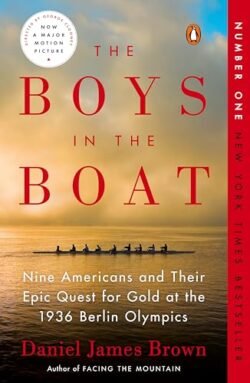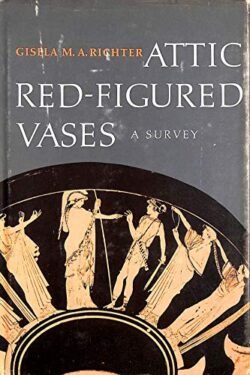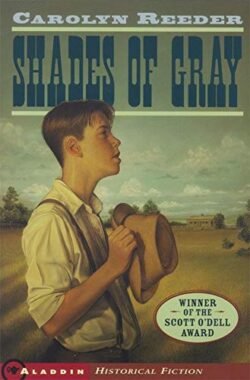The book focuses on Joe Rantz, a rower with a difficult past, and his journey with his teammates to achieve Olympic glory. The narrative explores the physical and emotional challenges the team faces, from rigorous training sessions to internal conflicts, all while under the guidance of their visionary coach, Al Ulbrickson, and the eccentric boat builder, George Pocock, who provides them with the craft they need to compete at the highest level. Brown weaves together the personal stories of the rowers with the broader historical context, offering insights into the socio-political environment of the 1930s. The journey to the Berlin Olympics is not just a sports story but also a reflection on the American spirit during a time of global tension and upheaval. The race itself is depicted with thrilling precision, bringing to life the excitement and drama of competitive rowing. Character Analysis Joe Rantz: Joe Rantz is a young man of humble origins, battling personal and economic hardships during the Great Depression. Abandoned by his family at a young age, Joe’s story is one of resilience and determination. His journey to becoming an Olympic champion is marked by challenges that test his physical limits and emotional strength. Joe embodies the spirit of perseverance, showcasing how individual effort and determination contribute to team success. His character also explores themes of forgiveness and reconciliation, particularly in his relationships with his family. The Team: While Joe is a focal point, his teammates and their diverse backgrounds enrich the narrative, each contributing their unique strengths and overcoming personal obstacles. The team’s dynamics, including their initial conflicts and evolving camaraderie, illustrate the importance of unity and trust in achieving a common goal. The characters of Roger Morris, Don Hume, and coxswain Bobby Moch, among others, add depth to the story, highlighting how diverse personalities can come together to form a cohesive and formidable team. George Pocock: George Pocock, the boat builder and mentor to the team, is another pivotal character. His wisdom, passion for rowing, and philosophical insights into the nature of teamwork and human potential provide a guiding light for the boys. Pocock’s character embodies the ideals of craftsmanship, integrity, and mentorship, serving as a moral and inspirational figure for the team and the reader alike. Al Ulbrickson: Al Ulbrickson, the team’s coach, faces his own set of challenges in molding the boys into Olympic champions. His stern demeanor and high standards push the team to excel, but his internal struggles and doubts reveal a complex character committed to the success of his rowers. Ulbrickson’s leadership style and strategic decisions play a critical role in navigating the team through competitions leading up to the Olympics. Themes and Analysis Resilience and Determination: The rowers’ ability to overcome adversity and remain focused on their goal embodies the themes of resilience and determination. Teamwork and Unity: The book highlights the importance of teamwork and the deep bonds formed between the rowers, showcasing how unity and collaboration are essential for success. Historical and Political Context: The narrative is set against the rise of Nazi Germany and the looming threat of World War II, adding a layer of historical significance to the team’s quest for gold. “The Boys in the Boat” is more than just a sports story; it is a testament to the human spirit’s capacity to overcome adversity through teamwork, determination, and courage. Daniel James Brown’s vivid storytelling not only captures the thrilling journey of the University of Washington’s rowing team but also offers a poignant exploration of the era’s socio-political challenges. The book serves as a powerful reminder of how collective effort and unwavering spirit can achieve remarkable feats against the odds. It is an inspiring read that resonates with anyone who appreciates the value of perseverance, the importance of unity, and the impact of sporting achievements on national pride and identity. If the summary caught your interest, Consider reading the full book on AbeBooks. Explore this book on AbeBooks
A Black Gambleras World of Liquor, Vice, and Presidential Politics
In this book, the author likely chronicles the life of William Thomas Scott, offering insights into his upbringing, career, and impact on the broader historical context of his time. Scott’s story is likely presented as a lens through which to explore issues of race, politics, and social change in America during the 19th and early 20th centuries. Themes and Analysis Race and Identity: As an African American in a predominantly white society, Scott’s experiences likely shed light on the complexities of racial identity and belonging in America. The book may explore how Scott navigated systemic racism and discrimination while carving out a place for himself in various spheres of society. Politics and Power: Scott’s involvement in presidential politics suggests a level of political acumen and influence. The book may delve into his connections with political figures of the time, his contributions to political campaigns, and the role of African Americans in shaping political discourse and policy. Vice and Society: The title hints at Scott’s involvement in activities such as gambling and the liquor trade, which were often associated with vice and moral ambiguity in 19th-century America. The book may explore how Scott’s engagement with these industries intersected with broader social attitudes towards morality, vice, and social order. As a biographical study, “A Black Gambler’s World of Liquor, Vice, and Presidential Politics” offers a nuanced portrait of an often overlooked figure in American history. Scott’s life story likely provides valuable insights into the complexities of race, politics, and social dynamics during a transformative period in American history. By chronicling the life of William Thomas Scott, the author of this book likely seeks to illuminate broader themes and issues related to race, politics, and society in 19th and early 20th century America. Scott’s story serves as a reminder of the diverse experiences and contributions of African Americans throughout American history, challenging traditional narratives and expanding our understanding of the past. If the summary caught your interest, Consider reading the full book on AbeBooks. Explore this book on AbeBooks
An Irish-Speaking Island
In “An Irish-Speaking Island,” Nicholas M. Williams provides a comprehensive examination of the Gaeltacht, shedding light on its linguistic heritage, sociolinguistic dynamics, and ongoing efforts to preserve the Irish language. The book offers insights into the historical development of Irish-speaking communities and their relationship with broader Irish society. Themes and Analysis Linguistic Revival: At the heart of “An Irish-Speaking Island” is the story of the Irish language’s resilience and revival. Williams explores the challenges and triumphs of language revitalization efforts in the face of centuries of English dominance and cultural suppression. The book delves into the role of education, media, and government policy in promoting and sustaining Irish language use. Cultural Identity: Through interviews, historical analysis, and ethnographic research, Williams examines the intertwined nature of language and cultural identity in the Gaeltacht. The book explores how language shapes individual and collective identities, fostering a sense of belonging and heritage among Irish speakers. Sociolinguistic Variation: “An Irish-Speaking Island” likely delves into the linguistic diversity within the Gaeltacht, exploring regional dialects, language contact phenomena, and the impact of language shift on traditional speech communities. Williams may also examine the role of code-switching and language mixing in contemporary Irish language use. As one of the few comprehensive studies of the Gaeltacht, “An Irish-Speaking Island” holds significance for scholars, policymakers, and anyone interested in the preservation of minority languages and cultures. Williams’ meticulous research and nuanced analysis contribute to a deeper understanding of the complexities of language revitalization and cultural preservation in Ireland. “An Irish-Speaking Island” offers a rich tapestry of insights into the Gaeltacht’s linguistic landscape, cultural heritage, and ongoing struggles and triumphs. By documenting the history and contemporary realities of Irish-speaking communities, Williams highlights the importance of language revitalization efforts in preserving Ireland’s unique linguistic and cultural heritage for future generations. If the summary caught your interest, Consider reading the full book on AbeBooks. Explore this book on AbeBooks
The Colonial Background of the American Revolution
Andrews’ narrative begins with the early settlements and covers the entire colonial period, highlighting key events and legislation that strained the relationship between Britain and her American colonies. He provides a balanced view, considering perspectives from both sides of the Atlantic. The culmination of these tensions, as detailed by Andrews, led to the outbreak of the Revolutionary War. Character Analysis While not focusing on individual characters, Andrews’ work brings to life the collective character of the American colonies and the British government. He portrays the evolving identity and growing resolve of the colonies in contrast to the often-misguided policies and perceptions of the British. Andrews’ thorough analysis concludes with a reflection on the inevitability of the Revolution, given the divergent paths of the colonies and Britain. He suggests that the seeds of revolution were sown through decades of policy and conflict, making the eventual break an unsurprising outcome of the colonial experience. For those interested in a deep dive into the conditions that fostered American independence, Andrews’ work is an essential read. It offers a nuanced understanding of the Revolution, rooted in the complexities of colonial life and governance. If the summary caught your interest, Consider reading the full book on AbeBooks. Explore this book on AbeBooks
Attic Red-Figured Vases: A Survey
While “Attic Red-Figured Vases: A Survey” does not follow a narrative plot, it is organized in a logical and informative manner that guides readers through the history and intricacies of red-figure pottery. Richter begins by tracing the origins of the red-figure technique, marking its emergence as a departure from the earlier black-figure style. She then explores the golden age of red-figure pottery, highlighting the works of master painters and their contributions to the art form’s evolution. The book also addresses the decline of red-figure vase painting and its eventual replacement by other styles. Throughout, Richter incorporates analysis of specific vases and painters, using them as case studies to illustrate broader trends and innovations in the field. Character Analysis The “characters” within Richter’s survey are the ancient Greek vase painters and potters themselves, many of whom remain anonymous. However, through their work, these artisans express their individual styles, themes, and technical mastery. Richter sheds light on the most influential figures in red-figure vase painting, such as Euphronios, the Berlin Painter, and the Brygos Painter, among others. By examining the nuances of their work, she effectively brings these ancient artists to life, offering insight into their creative processes and the cultural narratives they sought to capture. As a scholarly work, “Attic Red-Figured Vases: A Survey” is rich in detailed descriptions, technical terminology, and analytical observations rather than quotable passages. Richter’s concluding remarks emphasize the enduring legacy of red-figure vases as both artistic masterpieces and invaluable historical documents that offer a window into the life and mythology of ancient Greece. In conclusion, Gisela M. A. Richter’s “Attic Red-Figured Vases: A Survey” remains a cornerstone in the study of ancient Greek vase painting. Her meticulous scholarship and passion for the subject matter have produced a work that is not only academically rigorous but also accessible to those wishing to delve deeper into the art and culture of classical antiquity. Through her survey, Richter provides a comprehensive overview that continues to inform and inspire researchers, students, and enthusiasts of classical art history. If the summary caught your interest, Consider reading the full book on AbeBooks. Explore this book on AbeBooks
The Flowering of New England
While “The Flowering of New England” does not follow a traditional plot, it is structured around the chronological development of literary and cultural movements in New England from 1815 to 1865. Brooks begins by setting the stage with the post-Revolutionary War era’s intellectual climate, gradually leading to the emergence of transcendentalism and other significant movements that defined the period. He meticulously documents the establishment of literary circles, the publication of groundbreaking works, and the public and private lives of the era’s leading figures. Through his narrative, Brooks traces the evolution of New England’s literary landscape, highlighting the interplay between individual creativity and the broader social and political currents of the time. Character Analysis The “characters” in Brooks’ narrative are the authors and intellectuals of New England, whose lives and works are examined in depth. Figures like Emerson and Thoreau are portrayed not just as writers but as thinkers who significantly influenced American culture and philosophy. Brooks delves into their personal struggles, friendships, and the philosophical quests that informed their writings, providing a comprehensive view of their contributions to literature and thought. The book paints a complex picture of these figures, acknowledging their flaws and contradictions, while also celebrating their achievements and the enduring impact of their work. “The Flowering of New England” is rich with insightful observations and analyses that capture the spirit of the era. One of Brooks’ key assertions is the importance of understanding the cultural and historical context to fully appreciate the literary output of any period. Though direct quotes are not provided here, Brooks’ narrative is filled with eloquent commentary on the nature of American identity, the role of the writer in society, and the transformative power of literature. In conclusion, Van Wyck Brooks’ “The Flowering of New England” stands as a monumental work in American literary history, offering a comprehensive and engaging exploration of a pivotal period in the development of American literature and thought. Brooks’ meticulous research, combined with his narrative skill, makes this book not only an academic achievement but also a compelling read for anyone interested in the cultural heritage of the United States. Through his examination of New England’s literary renaissance, Brooks provides invaluable insights into the complexities of American identity and the enduring legacy of its early intellectuals. If the summary caught your interest, Consider reading the full book on AbeBooks. Explore this book on AbeBooks
Shades of Gray
After losing his family to the war, Will Page is sent to live with his uncle Jed and Aunt Leah in the Shenandoah Valley. Bitter and angry, Will views his uncle, who refused to fight in the war, as a coward. The novel traces Will’s emotional and moral development as he comes to terms with his grief and learns to see the world in more than just black and white. Through his interactions with his cousins, his aunt and uncle, and the daily challenges of farm life, Will begins to understand that courage can take many forms and that the reasons people have for their choices during the war were far more complicated than he initially believed. The story culminates in Will’s realization that true bravery is about standing up for one’s beliefs and protecting those one loves, even when those actions do not align with conventional definitions of heroism. Character Analysis Will Page: The protagonist, Will, is initially consumed by anger and grief. His character development is central to the novel as he evolves from a boy with a rigid view of right and wrong to someone who appreciates the complexity of human motives and actions. Uncle Jed: As a man who chose not to fight in the Civil War due to his moral convictions, Uncle Jed represents the theme of nontraditional courage. His character challenges conventional notions of bravery and provides a counterpoint to Will’s initial beliefs. Aunt Leah: Aunt Leah is a nurturing figure who represents the strength and resilience of those who kept the home fronts going during the war. Her patience and understanding play a crucial role in Will’s emotional journey. While specific quotes from “Shades of Gray” are not provided here, the novel is filled with powerful moments of dialogue and reflection that capture the essence of its themes. Carolyn Reeder uses these moments to weave a narrative that encourages readers to consider the many “shades of gray” in moral and ethical decisions, particularly in the context of war and personal belief systems. In conclusion, “Shades of Gray” by Carolyn Reeder is a deeply moving and insightful novel that offers a unique perspective on the American Civil War and its aftermath. Through Will Page’s journey from bitterness to understanding, Reeder skillfully addresses the complexities of human nature, the pain of loss, and the possibility of reconciliation and growth. This novel is a valuable contribution to young adult literature, offering both historical insight and timeless lessons on empathy, courage, and the importance of questioning one’s assumptions. If the summary caught your interest, Consider reading the full book on AbeBooks. Explore this book on AbeBooks
Unbroken: A World War II Story of Survival
The story of “Unbroken” unfolds with Louis Zamperini’s early life and Olympic success, setting the stage for his service in the United States Army Air Forces during World War II. After his plane crashes into the Pacific, Zamperini and two crewmates survive on a raft for 47 days, battling starvation, sharks, and the elements, only to be captured by the Japanese Navy. The bulk of the narrative focuses on Zamperini’s ordeal in POW camps, where he endures torture and degradation at the hands of his captors, particularly by a sadistic guard known as “The Bird.” Despite these trials, Zamperini’s spirit remains unbroken, and the story culminates in his return home, his struggles with post-war life, and ultimately, his journey towards forgiveness and redemption. Character Analysis Louis Zamperini: The protagonist, whose incredible saga from Olympic athlete to war hero and POW survivor, embodies resilience and the capacity to overcome adversity. Zamperini’s character is a testament to the strength of the human spirit in the face of physical and psychological torment. Mutsuhiro “The Bird” Watanabe: As Zamperini’s tormentor, Watanabe represents the darkest aspects of human nature. His cruelty towards Zamperini highlights the themes of dehumanization and the struggle to maintain dignity under oppression. Phil: Zamperini’s fellow survivor and friend. His presence in the narrative reinforces the importance of camaraderie and hope in surviving the most desperate situations. The characters in these tales are more than just animals with human traits; they embody the complexities of human nature and societal roles, reflecting the struggles and strategies of African Americans under slavery and in its aftermath. While direct quotes from “Unbroken” cannot be provided here, the narrative is replete with moments that underscore the themes of endurance, the power of the human spirit, and the importance of forgiveness. Zamperini’s journey from the brink of despair to finding peace and forgiveness captures the essence of the human capacity for resilience and redemption. Hillenbrand’s work serves as a powerful reminder of the atrocities of war, the complexity of the human psyche, and the incredible stories of courage and survival that emerge from the darkest times. “Unbroken” is more than a war story; it is a profound exploration of the capacity for human endurance, the depths of cruelty, and the heights of spirit. Through Louis Zamperini’s life, readers are invited to reflect on the power of hope and the unyielding strength that resides within the human heart. This narrative not only commemorates the resilience of those who served and suffered during World War II but also offers timeless lessons on the power of forgiveness and the indomitable will to survive and thrive against all odds. If the summary caught your interest, Consider reading the full book on AbeBooks. Explore this book on AbeBooks
The Old Country School
In this book, the author likely traces the development of rural education in the Midwestern states, shedding light on the challenges, innovations, and impact of schooling in rural communities. The title suggests a focus on traditional, one-room schoolhouses that were once common in rural areas. Themes and Analysis Educational Landscape: The book may provide an overview of the educational landscape in rural Midwest communities, examining the establishment of one-room schoolhouses, the role of local communities in education, and the challenges faced by educators and students in rural settings. Social and Cultural Context: By exploring the history of rural education, the author may delve into the broader social and cultural context of the Midwest, including migration patterns, agricultural practices, and community dynamics that influenced the development of rural schools. Innovations and Challenges: The book may highlight innovations and challenges in rural education over time, such as changes in curriculum, teaching methods, transportation, and the impact of technological advancements on rural schools. As a historical study, “The Old Country School” likely holds significance for scholars, educators, and anyone interested in the history of education and rural life in the Midwest. The book may offer valuable insights into the role of education in shaping rural communities and the experiences of students and educators in rural schools. By chronicling the story of rural education in the Midwest, this book likely seeks to preserve and celebrate the rich heritage of rural schools while also providing a deeper understanding of the challenges and achievements of rural educators and students. The old country school serves as a symbol of resilience, community, and the enduring importance of education in rural America. If the summary caught your interest, Consider reading the full book on AbeBooks. Explore this book on AbeBooks
The War: An Intimate History
The book likely offers a comprehensive exploration of World War II, not through the lens of generals and politicians, but by delving into the personal stories of ordinary Americans who experienced the war firsthand. Ward and Burns are known for their detailed historical research and ability to humanize complex events, suggesting that “The War” provides an intimate portrayal of the impact of global conflict on individual lives and communities across the United States. Themes and Content Personal Narratives: The book probably centers around personal narratives from a diverse group of individuals, including soldiers, nurses, and civilians, whose lives were irrevocably changed by the war. These stories likely span the major theaters of the war, from the Pacific to Europe, offering insights into the bravery, sacrifice, and suffering of those who served and those who waited at home. Home Front: An exploration of the American home front is likely a significant theme, detailing how the war effort transformed towns and cities across the country. Topics such as wartime production, rationing, and the internment of Japanese Americans could be covered to illustrate the domestic impact of the war. Racial and Gender Dynamics: The book may address how World War II challenged and changed American society, including the roles of women in the workforce and the military, and the experiences of African American and other minority soldiers who fought for freedom abroad while facing discrimination at home. The Holocaust and War Atrocities: Given the authors’ commitment to comprehensive historical accounts, the book likely does not shy away from the horrors of the Holocaust, the atrocities committed by and against combatants, and the moral complexities of warfare. Visual Elements Accompanying the textual narrative, “The War: An Intimate History, 1941-1945” probably includes a wealth of photographs, maps, and perhaps even reproductions of personal letters and diaries, enriching the readers’ understanding of the era and providing a visceral connection to the past. The book aims to provide a more nuanced understanding of World War II, emphasizing the human dimension of this global conflict. By focusing on personal stories, Ward and Burns highlight the interconnectedness of the human experience during wartime, demonstrating how the war shaped the United States and the world in profound and lasting ways. “The War: An Intimate History, 1941-1945” is likely an essential read for anyone looking to grasp the full impact of World War II on American soldiers, civilians, and the fabric of society, bridging the gap between historical events and personal reality. If the summary caught your interest, Consider reading the full book on AbeBooks. Explore this book on AbeBooks










